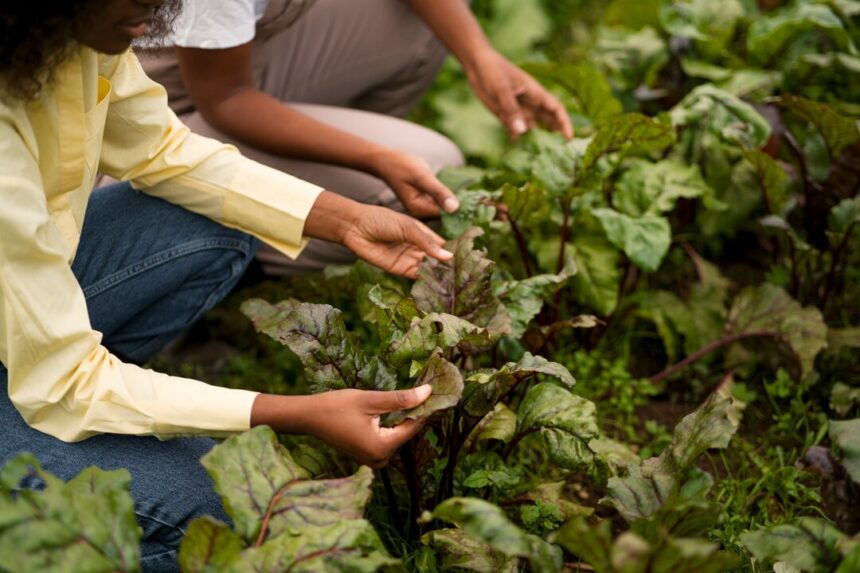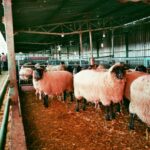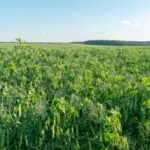Biodiversity is crucial to the health and sustainability of farming systems. It supports ecosystem services like pollination, soil fertility, pest control, and water regulation, all of which are essential for the productivity of any farm. However, despite the increasing awareness of biodiversity’s importance, many South African farmers still face challenges in promoting and maintaining biodiversity on their farms. Below are ten common mistakes made in promoting biodiversity and how to avoid them.
1. Neglecting the Value of Native Plants
Many farmers focus on growing crops and plants that are economically valuable but overlook native plants that are vital for maintaining local ecosystems. Native plants provide food and habitat for local wildlife, help preserve soil health, and require less water and fertilizer. Planting only non-native species can lead to the degradation of local ecosystems, making them less resilient and more susceptible to disease and pests.
Solution: Incorporate native plants into your farm’s landscape. Create buffer zones or corridors of native vegetation, such as grasses, trees, and shrubs, around your crops and pastures to support wildlife and improve soil quality.
2. Overuse of Pesticides and Fertilizers
While pesticides and fertilizers help control pests and enhance crop yields, excessive use can harm biodiversity. Pesticides can kill beneficial insects, including pollinators, and fertilizers can lead to nutrient imbalances in the soil, impacting plant growth and water quality.
Solution: Implement integrated pest management (IPM) practices. This includes using biological controls, crop rotation, and targeted application of chemicals. Fertilize based on soil testing to avoid excess nutrient application, and consider organic or low-impact alternatives.
3. Lack of Crop Diversity
Monocropping, or the practice of growing a single crop over large areas, is a significant contributor to biodiversity loss. Monocropping can lead to soil depletion, increased pest problems, and reduced resilience to environmental stressors.
Solution: Diversify crops on your farm. Introduce a variety of plants, including legumes, vegetables, and flowers, which can attract beneficial insects, improve soil health, and reduce the risk of pest outbreaks.
4. Ignoring Soil Health
Soil is home to a vast array of microorganisms that play a crucial role in nutrient cycling, pest control, and overall farm productivity. Poor soil management, such as excessive tilling or the lack of organic matter, can harm these beneficial organisms and reduce biodiversity.
Solution: Adopt sustainable soil management practices. Use cover crops, reduce tilling, and apply organic matter like compost or mulch to enhance soil fertility and encourage microbial diversity.
5. Not Creating Wildlife Habitats
Farmers often focus solely on their crops and livestock, neglecting the creation of habitats for local wildlife. Wildlife such as birds, insects, and small mammals are essential for pollination, pest control, and soil aeration.
Solution: Set aside areas of your farm as wildlife-friendly zones. Plant hedgerows, leave areas of natural vegetation, or create small ponds or wetlands to provide shelter and food sources for wildlife. Avoid disturbing these areas too much to allow them to thrive.
6. Overgrazing and Land Degradation
Overgrazing by livestock is a common mistake that leads to soil compaction, reduced plant diversity, and increased erosion. When animals graze too much, they damage plant roots and disturb soil structures, making it harder for plants to grow.
Solution: Implement rotational grazing techniques. Allow pastures to rest and regenerate before grazing them again. This can help maintain healthy vegetation and prevent soil erosion.
7. Monocultural Tree Plantations
While tree plantations can provide economic benefits, monocultural tree farms—particularly those growing a single species—can reduce biodiversity. They offer limited habitats for wildlife and can disrupt local ecosystems.
Solution: If planting trees, consider mixed-species agroforestry systems that integrate a variety of tree species alongside crops. This will improve habitat diversity, increase resilience to pests and diseases, and promote ecosystem health.
8. Failure to Protect Water Sources
Waterways and wetlands are critical for biodiversity, providing habitats for aquatic species and acting as water filtration systems. However, many farms do not adequately protect these areas, leading to contamination, erosion, and loss of wildlife.
Solution: Establish buffer zones around water sources, using vegetation to filter runoff and prevent erosion. Implement strategies such as riparian buffer strips and wetlands restoration to protect water quality and support aquatic biodiversity.
9. Not Educating Workers About Biodiversity
Employees are often the ones implementing biodiversity practices on the farm, but if they are not properly educated about the importance of biodiversity, their efforts may be misdirected or ineffective.
Solution: Provide regular training and resources to your workers about the benefits of biodiversity and the specific practices they can use to help maintain it. Encourage them to actively participate in the farm’s biodiversity efforts.
10. Lack of Long-Term Planning
Promoting biodiversity is not a quick-fix process; it requires long-term planning and commitment. Some farmers may attempt short-term measures without considering how they will affect the farm’s ecosystem over time. Without a clear, long-term strategy, efforts may be fragmented and unsustainable.
Solution: Develop a comprehensive biodiversity management plan. Identify specific biodiversity goals, assess your farm’s current condition, and implement strategies that can be adjusted as conditions change. Regularly monitor and review your progress to ensure sustainability.
Promoting biodiversity on farms is not only beneficial for the environment but also essential for maintaining healthy and productive farming systems. By avoiding these common mistakes and implementing sustainable practices, South African farmers can contribute to the conservation of biodiversity while improving farm resilience and productivity. Adopting long-term strategies, creating wildlife-friendly spaces, and promoting soil health will help ensure that farms remain productive and resilient in the face of changing environmental conditions.
Join 'Farmers Mag' WhatsApp Channel
Get the latest Farming news and tips delivered straight to your WhatsApp
CLICK HERE TO JOIN






